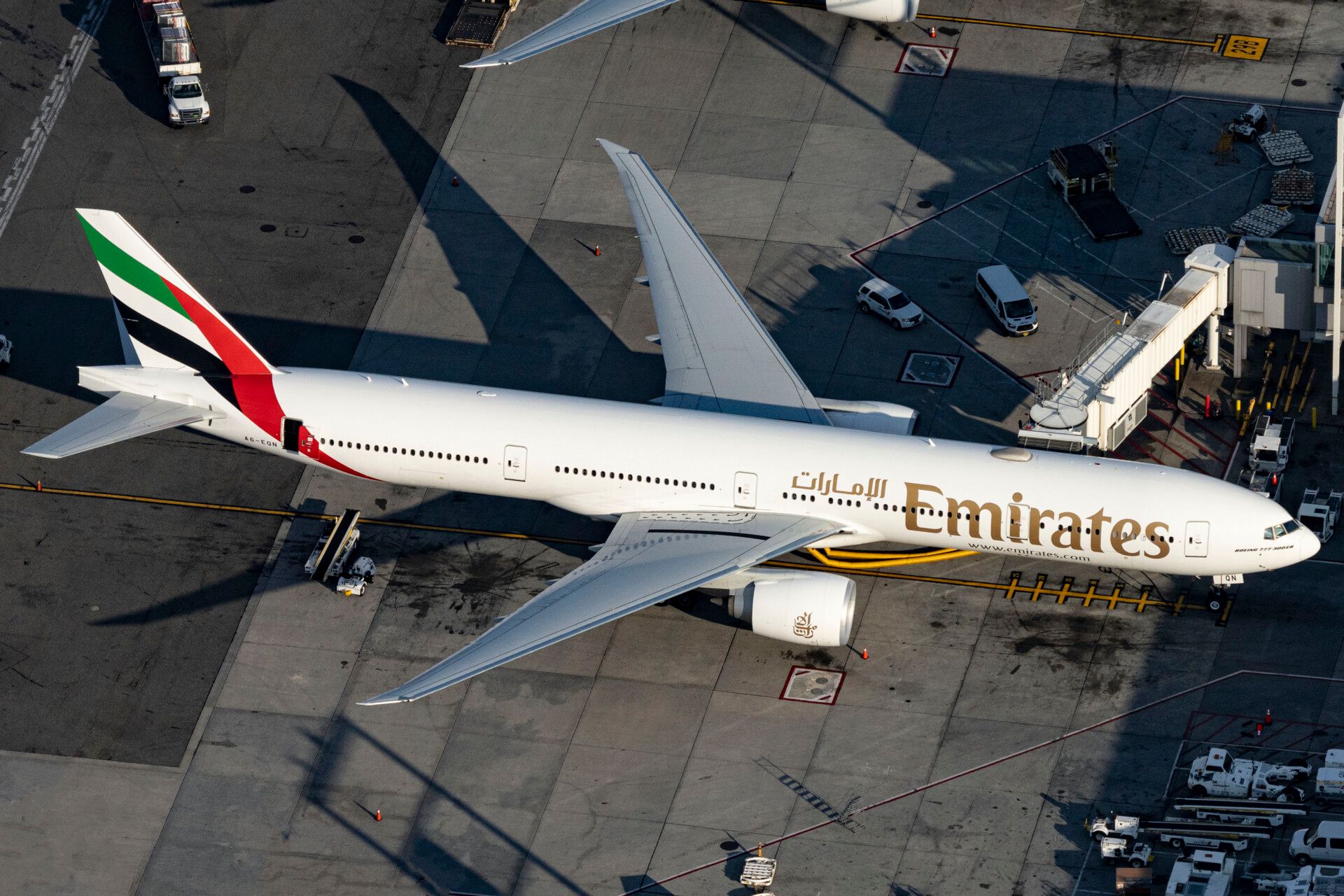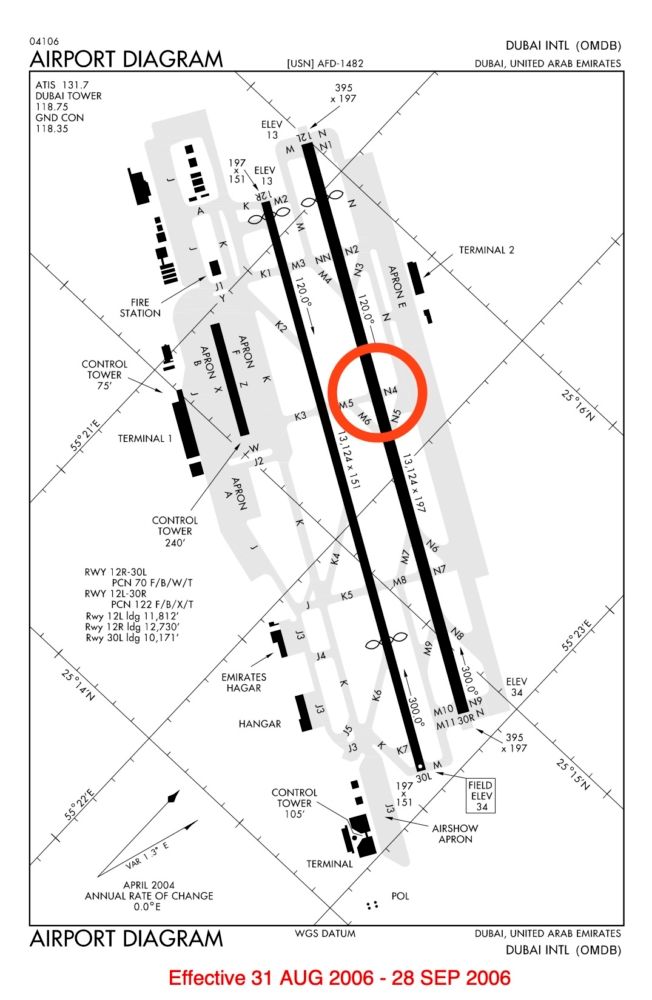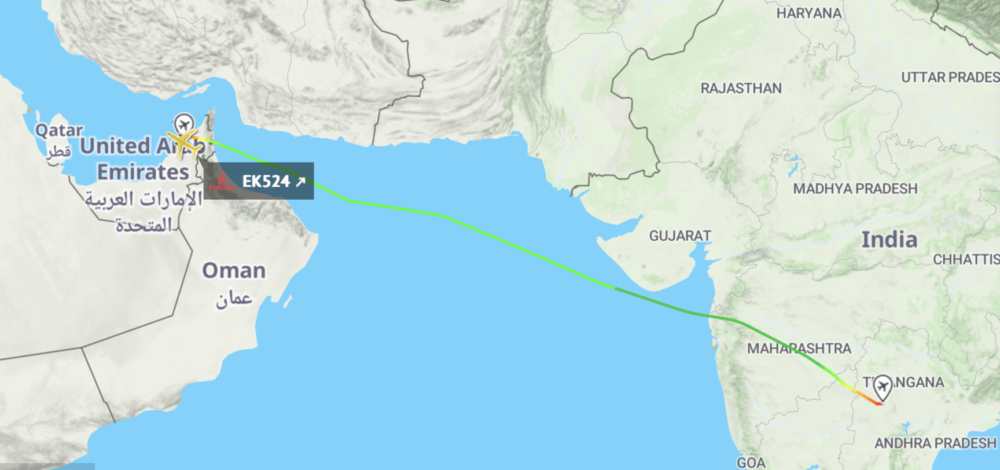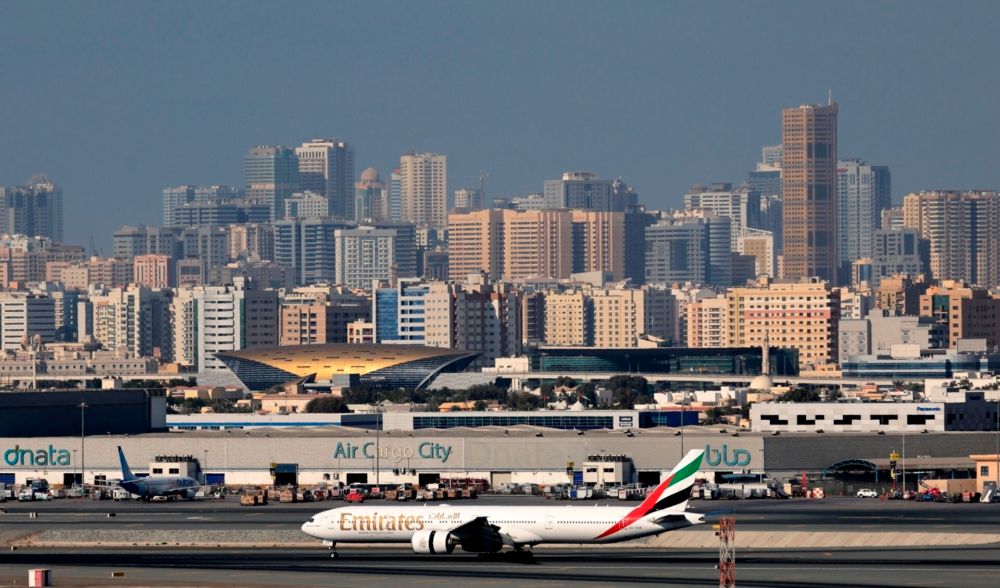Less than a month after an Emirates Boeing 777-300 was involved in an incident where adequate airmanship was questioned, another incident has taken place at the Middle Eastern airline. On January 9th, one of the carrier's 777s was accelerating for takeoff when the crew was instructed to reject takeoff due to a crossing aircraft. Sources note that this aircraft had not been granted proper ATC clearance before initiating takeoff roll.
Incident details
News of this incident comes via The Aviation Herald, which reports that the Boeing 777-300 registered A6-EQA had to reject takeoff due to a crossing aircraft. Taking place on January 9th with departure at 21:45 local time, the jet was operating flight EK524, which was leaving Dubai for Hyderabad.
The 777 was accelerating down Dubai International Airport's Runway 30R and had already reached a speed of approximately 100 knots over ground when ATC instructed them to reject takeoff due to a crossing aircraft. The crossing jet was another 777-300 registered A6-EBY, which was crossing over runway 30R using taxiway M5A, bound for taxiway N4 (see diagram below).
The aircraft slowed safely, exiting runway 30R behind the other 777 that had just crossed its path. The incident jet also used taxiway N4 to vacate the runway, doing so behind A6-EBY.
EK524 taxied back and departed about 30 minutes after the rejected takeoff occurred.
On the issue, Emirates provided Simple Flying with the following statement:
“On 9 January, flight EK524 was instructed by air traffic control to reject take-off on departure from Dubai and this was completed successfully. There was no aircraft damage, nor were there any injuries. Safety is always our top priority, and as with any incident we are conducting our own internal review. The incident is also under investigation by the UAE AAIS and we are unable to comment further.”
Stay informed: Sign up for our daily and weekly aviation news digests.
Clearance to initiate takeoff not granted
The aircraft performing the crossing was indeed given clearance to cross runway 30R. With the crossing located roughly halfway down the length of runway 30R, the A6-EBY was entering the runway as A6-EQA was beginning its takeoff roll.
Two independent sources reporting to The Aviation Herald note that flight EK524 began its takeoff roll without clearance from ATC.
No damage to A6-EQA was reported, nor were any injuries incurred during the incident. On Thursday, January 13th, Emirates confirmed that flight EK524 had been instructed to abort takeoff in the January 9th incident. The UAE's civil aviation regulator, the GCAA, has opened an investigation while the airline is conducting an internal review of its own.
One commenter remarking on the incident on The Aviation Herald offered a possible explanation for the incident, noting that the ATC instruction "Cleared to cross runway 30R" could have been misheard by the crew of EK524 as "Cleared takeoff runway 30R." This possible "mishearing" could also have been made worse by different accents, such as Australian or South African. Thus, with EK524 lined up on 30R and ready to initiate takeoff roll, the anticipation of clearance combined with poor communication may be a possible explanation of the event. Of course, this is only speculation as the investigation has just begun.
A close call?
Thankfully ATC noticed A6-EQA speeding down the runway in time to instruct the crew to reject takeoff. While ADS-B data transmitted by the aircraft's transponder indicate that a speed of 100 knots over ground was reached by the time the jet was 790 meters (2600 feet) down the runway, other information suggests the aircraft may have reached a speed as high as 130 KIAS (knots indicated airspeed).
Considering that A6-EQA had attained a speed of 100 knots over ground measured 1700 meters (5700 feet) short of taxiway N4, calculations indicate that the aircraft would have reached the crossing point in just over a minute (if we assume that the jet had continued to accelerate past that point of measurement). Thus, depending on the speed of the crossing jet, the situation could have been disastrous.
January 9th's incident comes less than a month after another incident involving the airline's Boeing 777s. On December 20th, it was reported that a 777-300 departing Dubai for Washington D.C. rotated for takeoff past the end of the runway and did not become airborne until at the end of the runway end safety area.
With an autopilot altitude setting improperly set, the December incident called into question the skills of the pilots involved. Many aviation enthusiasts on the sidelines have criticized the airline, alleging that it hires inexperienced pilots.
What are your thoughts on this incident? Could the explanation offered on the incident be plausible? Let us know by leaving a comment.




